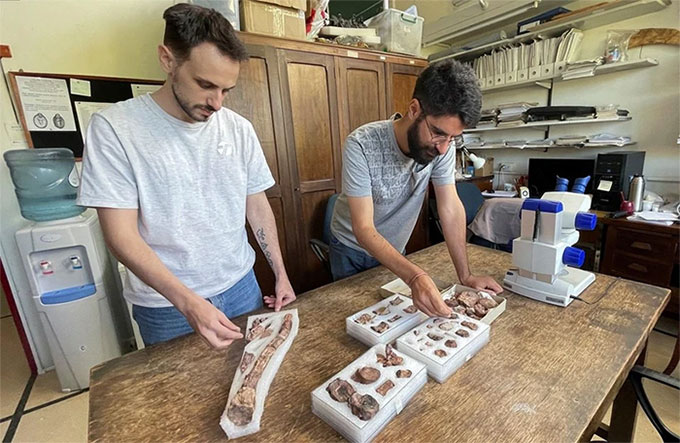This new dinosaur is a bipedal herbivore, the most important feature is a tail that curves downward unlike other dinosaurs where the tail is horizontal.
Argentine paleontologists say they have discovered fossils of a new medium-sized herbivorous dinosaur capable of running fast and living about 90 million years ago in the Cretaceous period and today in the Patagonia region located in Argentina. and Chile.
 Dinosaur fossil Chakisaurus nekul. (Source: GMA Network).
Dinosaur fossil Chakisaurus nekul. (Source: GMA Network).
With the support of the National Geographic Society, Argentine paleontologists have been conducting the above research since 2018 but recently published it in the journal Cretaceous Research.
According to research results, this dinosaur is called Chakisaurus nekul with the largest one having an estimated length of 2.5-3 meters and 70cm tall.
Scientists discovered the fossil at the Pueblo Blanco Nature Reserve in Río Negro province, southern Argentina, an area rich in fossils of mammals, turtles and fish along with dinosaurs. another has been found.
According to paleontologists, the new discovery shows that this is a dinosaur capable of running fast and with a downward-curving tail.
Study author Rodrigo Álvarez said this new dinosaur was a bipedal herbivore, the most important feature being that the tail had a downward curve unlike other dinosaurs where the tail was horizontal.
Experts affirm that this is a very new discovery for this animal species. In addition, Chakisaurus nekul also runs very fast, a characteristic that this animal needs to be able to defend itself and survive among predators.
Study co-author Sebastián Rozadilla added that Chakisaurus nekul had very strong hind limbs and a tail that could move side to side and thus be able to maintain balance during chases.





